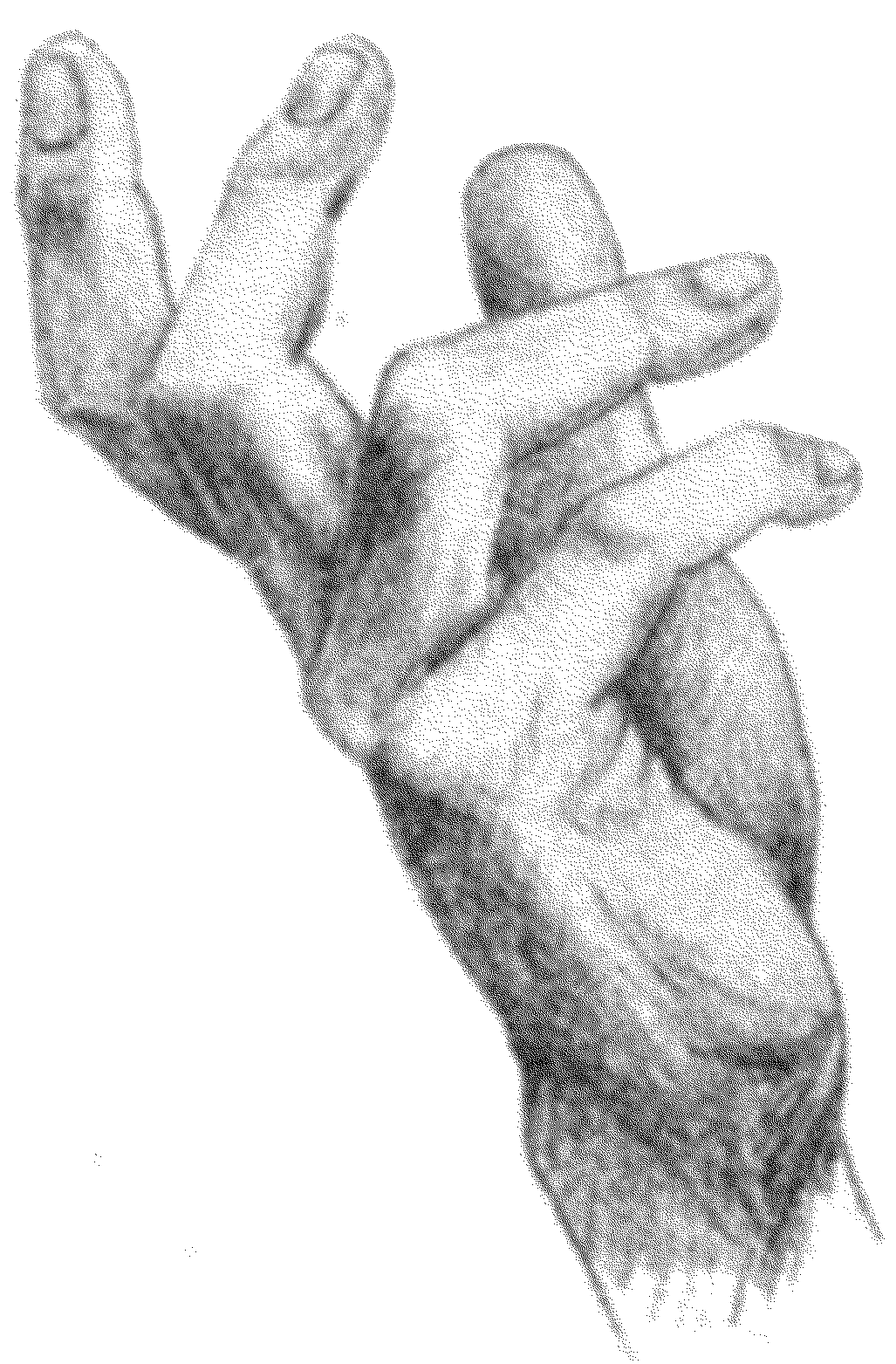Collective Psychic Architecture developed through a series of three exhibitions that I did with Taraneh Fazeli called Sick Time, Sleepy Time, Crip Time: Against Capitalism’s Temporal Bullying. This first one was at Elizabeth Foundation Project Space in Manhattan. The shows were about the politics of care in capitalism, and over time became more and more focused on a critique of what care was possible inside of a cultural institution.
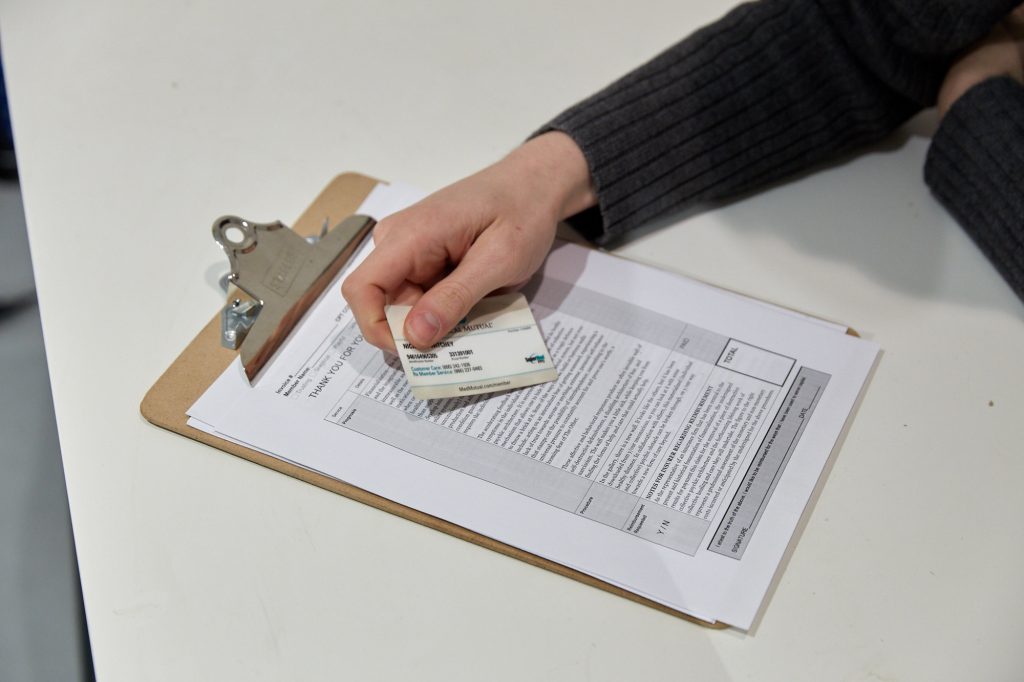
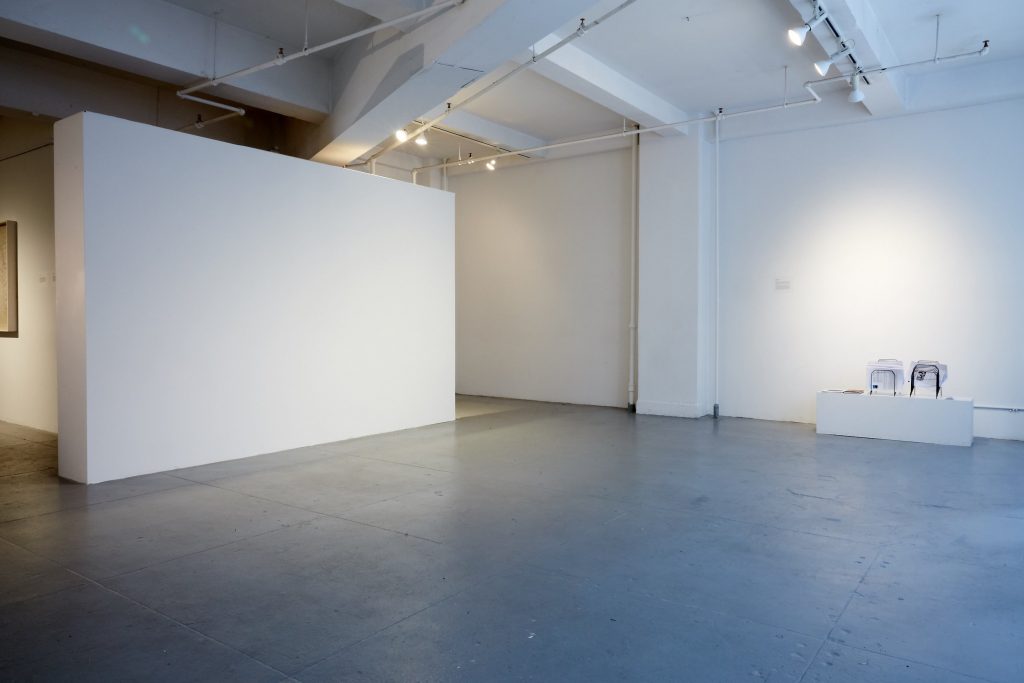
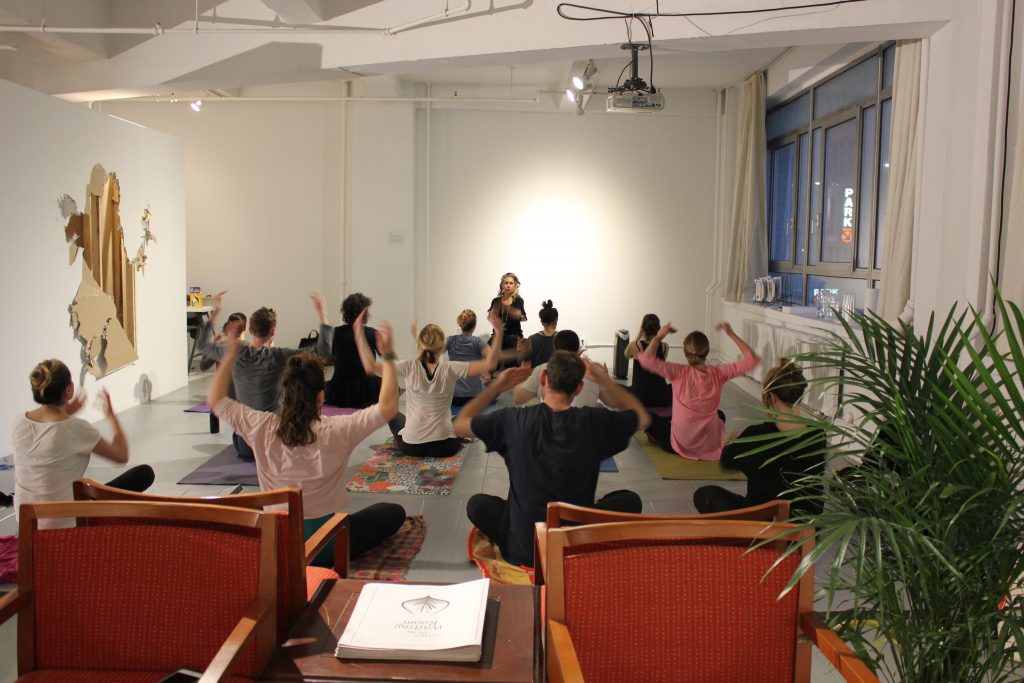
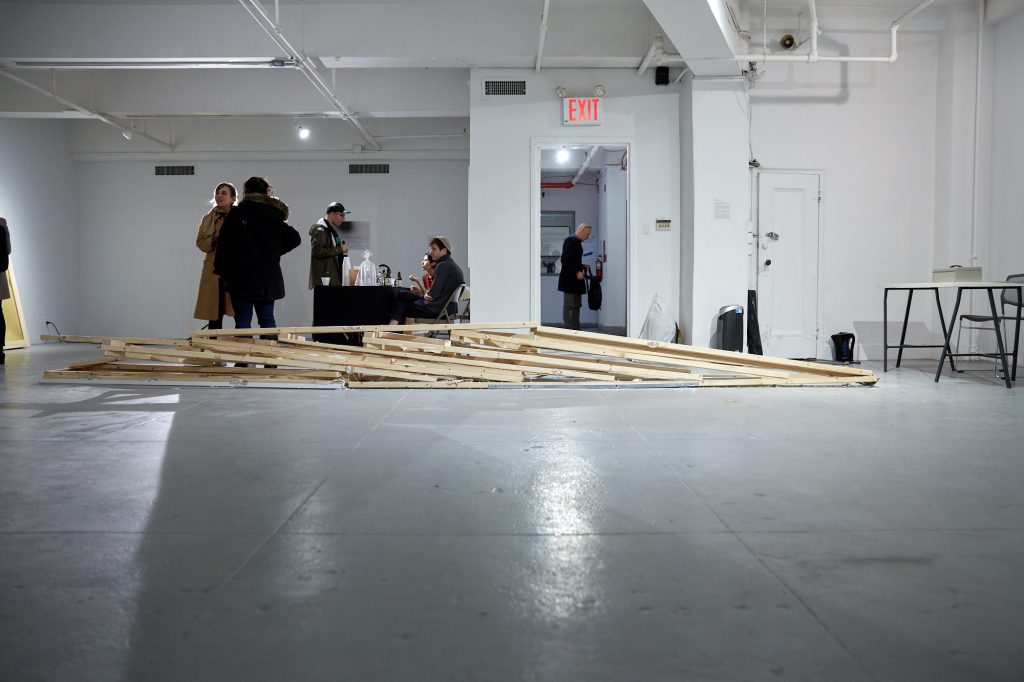
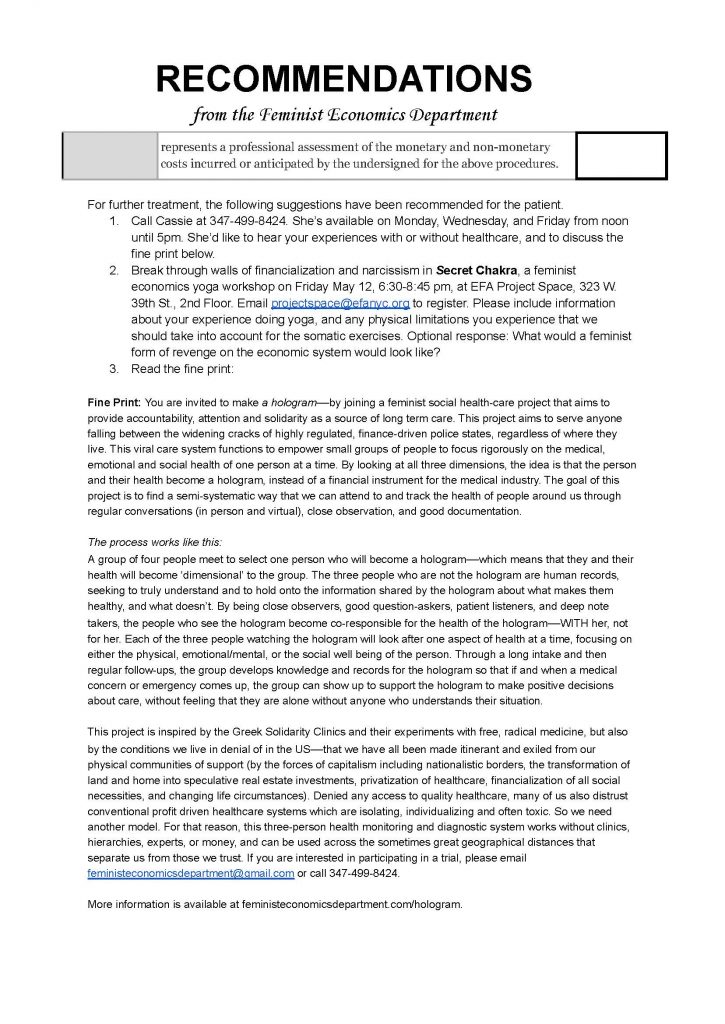
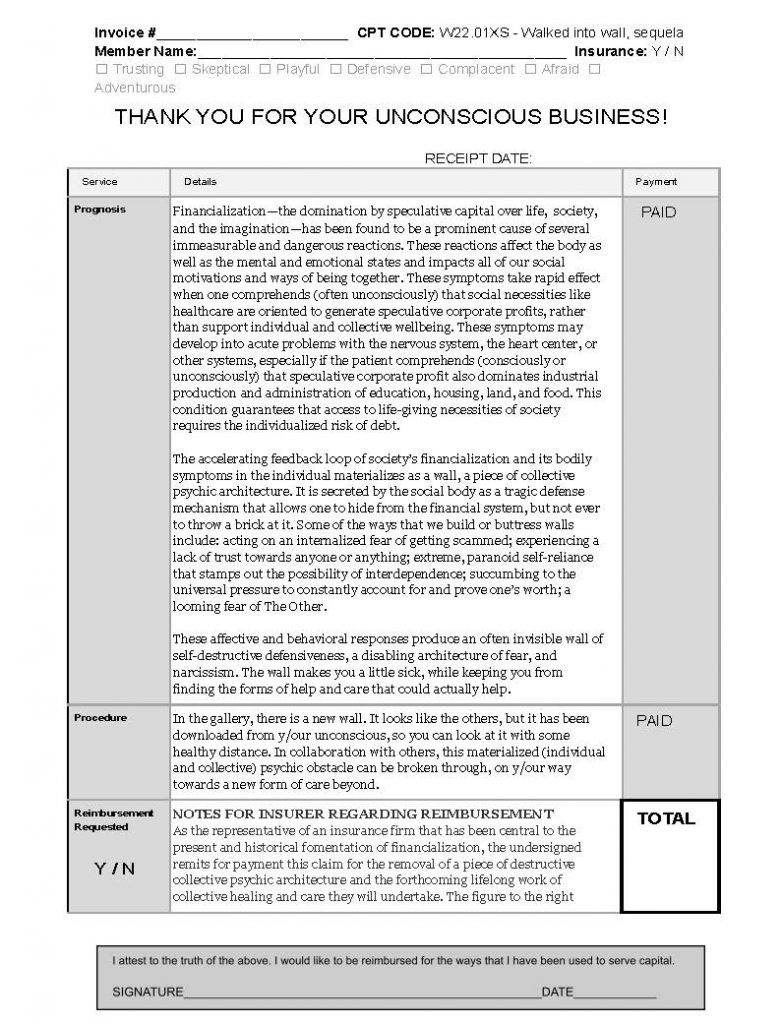
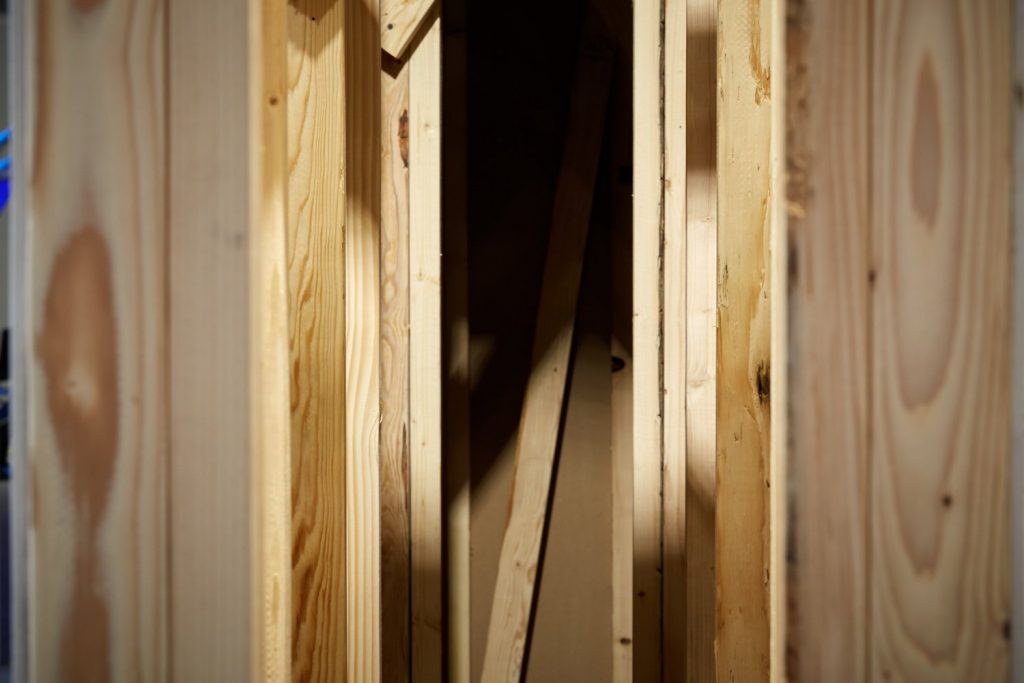
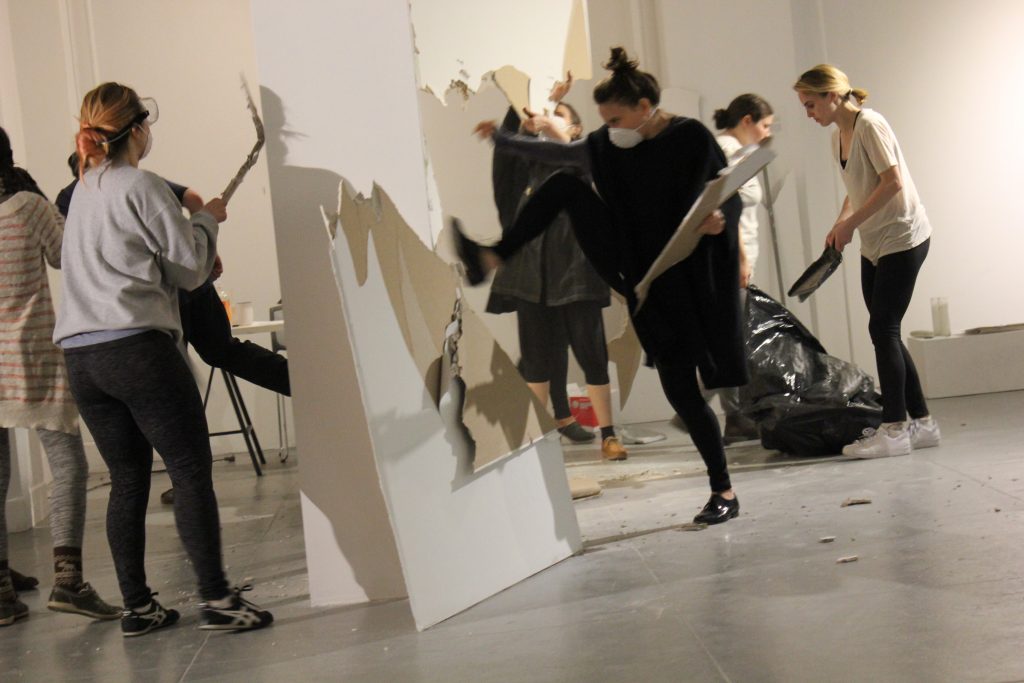
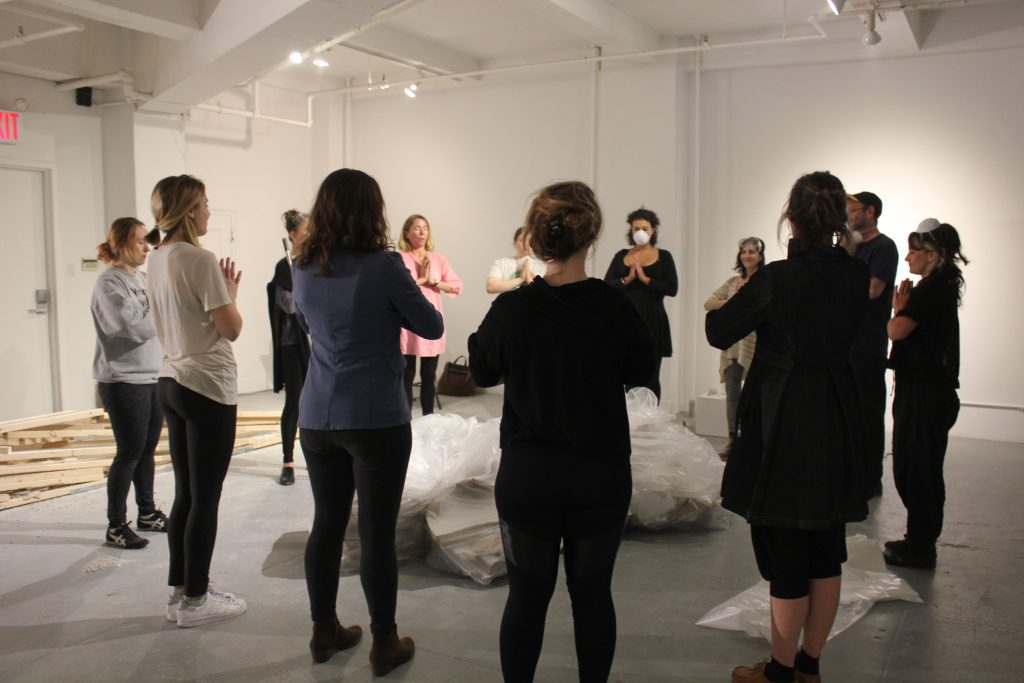
This was an early stage of trying out the hologram. With the curator, director of the gallery and one artist in the exhibition, we experimented with it in the background of the exhibition. On the back of the invoice that people received when entering the exhibition, they also got an invite to try out the hologram.
This project was a part of a series of three exhibitions curated by Taraneh Fazeli. You can learn more about them here.
For this first iteration, the curatorial text: Sick Time, Sleepy Time, Crip Time: Against Capitalism’s Temporal Bullying focuses on how the body is articulated in various discourses oriented around health. (Note: “Crip” is a political reclaiming of the derogatory label “cripple.”) It proposes that better incorporation of the states of debility, disability, and rest into society (particularly their temporalities) could be resistive to forms of oppression and provide possibilities for rethinking collectivity. Dragging on, circling back, with no regard for the stricture of the work week or compulsory ablebodiness, the time that this multi-prong curatorial project investigates is non-compliant. It refuses a fantasy of normalcy measured by either-in-or-out thresholds and demands care that exceeds that which the nuclear family unit can provide.
We are all united by the fact that we will experience fluctuating states of debility throughout the course of our lives whether we currently identify as sick or not. Furthermore, many of us are exhausted from living and working in a capitalist system as insufficient infrastructures for care have further deteriorated. Considering the fact that the failures of public health and biomedicine are felt by some disproportionately due to race, class, gender, sexuality, etc., this project provides a platform to explore collective forms of healing to deal with structural processes of exclusion and the way in which trauma is held in the body. To this end, artworks dealing with care, illness, fitness, sleep, somatic sustainability, labor, alternative temporalities, and wellness culture will be shown at EFA, with an exhibition on life/work balance providing a locus for ongoing conversations about transitional architectures for relief and potential repair.
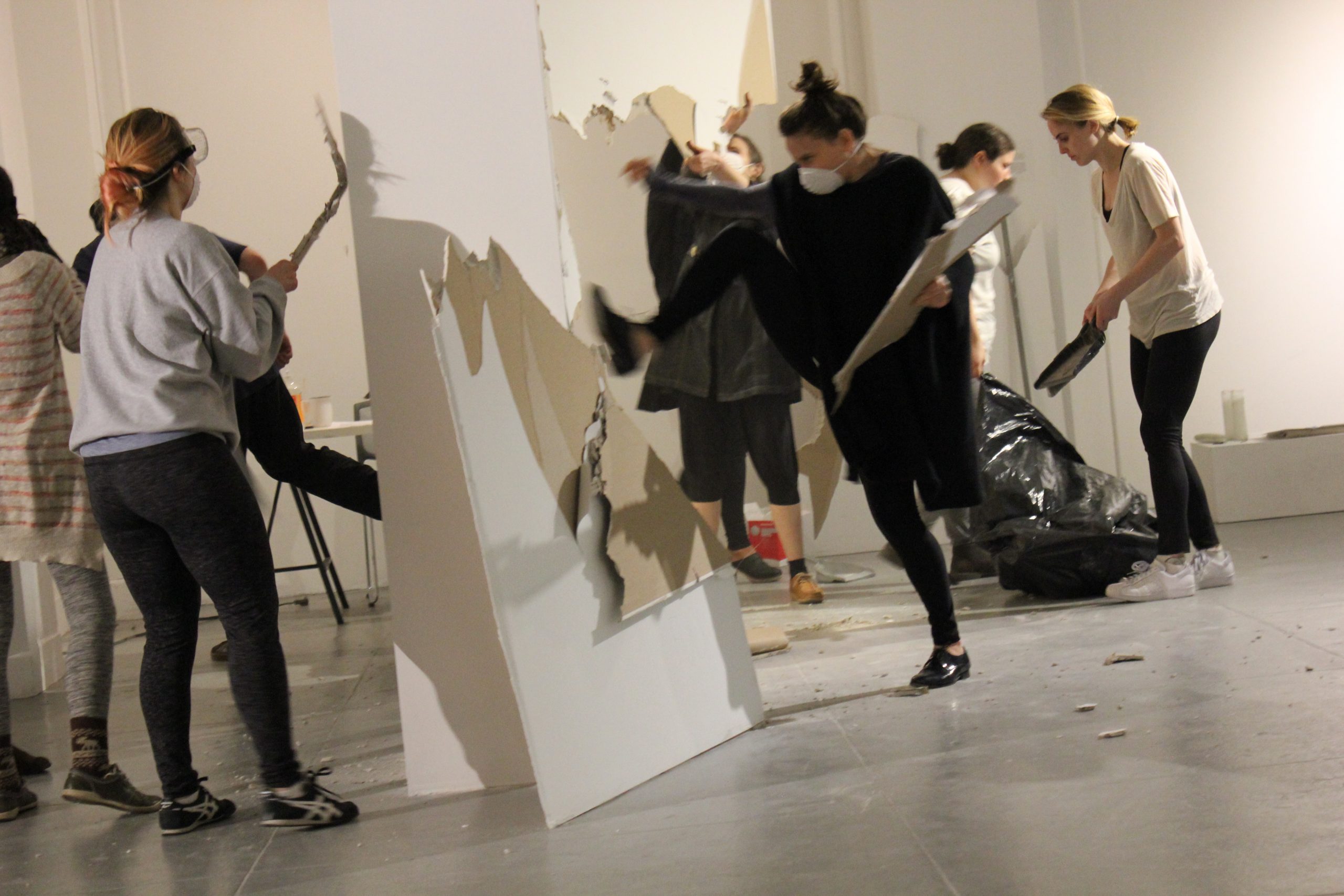
 means I chose not to be paid;
means I chose not to be paid;  means I got paid a relatively small amount of money, but it was what the venue/situation could afford and I did it for different reasons than money;
means I got paid a relatively small amount of money, but it was what the venue/situation could afford and I did it for different reasons than money; 
